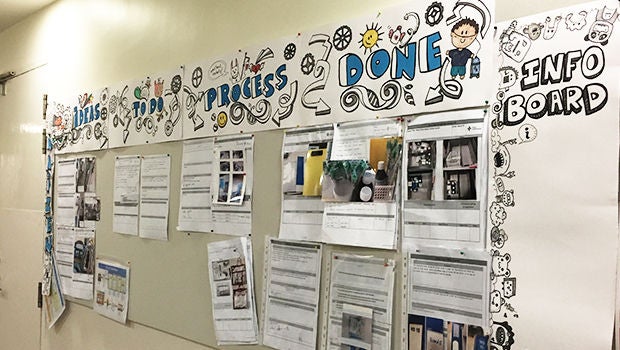
“Small Action + Passion = Big Change”
For years, nurses would record the personal belongings of patients on carbon copies of paper when patients were admitted to the wards, down to the number of coins they carried in each denomination.
One day, Senior Nurse Manager Leong Yoke Yin from Ward 55 Changi General Hospital (CGH) came up with the idea of using tamper-proof bags for patients to deposit their items instead. This simple change freed up the nurses’ time while achieving the same outcome, hassle-free. It was quickly adopted across CGH and hospitals within SingHealth.
Such bottom-up improvements take place every day in our hospitals. Unlike big infrastructural changes, small, incremental improvements often go unnoticed. Yet, changes initiated by frontline staff, who are most in tune with operational details, can make a big difference to both staff and patient well-being.
“Do a Kaizen”
CGH recognises the value of empowering staff to make changes. In 2015, they introduced a Japanese management method called “Kaizen” to encourage their nursing staff to spot areas for improvement in their work and co-create the solutions.

Kaizen literally means “change to become better”. The method is simple. If you find a problem in your work area, bounce it off your supervisor, write it down on a simple Kaizen form and pin it on the department’s Kaizen Board. The Kaizen Board has four columns: ideas, to-do, doing and done. The form is moved across the Board as the idea’s status changes. Everyone in the department sees the Board and can help shape the ideas.
Kaizen, or “Do Better”, is also one of the Thirteen Consistent Behaviours of High Trust highlighted in Steven M.R Covey’s Speed of Trust, a key programme in driving collaborative leadership in SingHealth.
Senior Nurse Manager (SNM) Fasela Jamal Mohd from Ward 46, CGH believes strongly in work improvement and is a champion for the Kaizen method.
“Making improvements to our work processes is something we have been doing. The Kaizen method makes it more systematic and encourages more participation. It’s a simple process and the ideas involve minimal cost and time to implement. You are doing small things with lasting improvement,” she explained.
Many ideas, such as the tamper-proof bags for storing patients’ items, have emerged from the Kaizen Boards in CGH, contributed by staff across the ranks. One of them was especially encouraging to SNM Fasela.

“The carrier for the maceratable pulp supplies was very deep and inconvenient for nurses to reach down to the bottom to retrieve the items. Ms Sim Lee Kian, one of our healthcare assistants suggested using cable ties to reduce the depth of the carrier so that it is easier for us to reach the items. It was such a simple idea that immediately solved the problem and saved us money. This shows that anyone can ‘do a Kaizen’,” said SNM Fasela.

Ideas can also come from patients or their family members. In the Surgical High Dependency Unit (Surgical HD Unit) of CGH, a nurse noticed a patient’s husband walking alongside the patient carrying a clothes hanger to hook the multiple drains attached to her while she was pushed by the physiotherapist. The “hanger idea” evolved into a smart, portable drain carrier which requires less manpower and makes the ambulation process easier.
Make work easier
Senior Staff Nurse (SSN) Jin Fei Fei from Surgical HD Unit, CGH who was involved in several Kaizen projects, shared how Kaizen helped to entrench the culture of improvement.
“Nothing is too small to be a Kaizen idea. As frontline staff, we are the ones who encounter the problems and can help think up the solutions…”
“… Role models are very important too. Having encouraging nurse managers who applaud ideas helps. Whenever there are new staff, we direct them to the Kaizen Board and share past Kaizen ideas with them. This helps induct them into the culture quickly,” she said.
As a supervisor, SNM Fasela acknowledged that there are skeptics to the initiative but that does not stop her from sharing and inspiring others to give it a try. With her constant encouragements and influence from peers, some of them were converted to believers of Kaizen.
“It always excites me when staff comes up to me with ideas. It shows that they are interested in their work and want to make things better. Ultimately, these small changes make their work easier and happier. Our patients benefit too,” she said.
No matter how small the idea may seem — such as using velcro tapes to secure bedside cords, putting separators in medicine baskets for easier retrieval, or using zip lock bags to organise batteries — every idea helps. And seeing your idea getting implemented is a great source of pride and motivation, as SSN Jin Feifei sums up aptly:
“When your idea helps to solve problems at the workplace, you really feel a sense of achievement.”
Brought to you by Strategy Retreat Group 8 – Engaged and Motivated Workforce.













 Get it on Google Play
Get it on Google Play